Each evening as I wind down here in the Bay Area, my partners in Nepal begin their work day. Though worlds apart, we have been in such close contact online that I feel a part of me is already there. In just three weeks, the rest of me will catch up, and I will be whole again in Kathmandu.
My residency will culminate in a workshop at Nepal Communitere, a cool makerspace in the heart of a vibrant art and tech zone in the Pulchowk district of Kathmandu. I’ll be leading a group of students and professionals to use digital fabrication to foster economic opportunities for women. The participants range from artists and engineers to entrepreneurs and teachers, with each bringing a passion for social change and valuable skills to support a community.
My practice has historically been to bring science and art together for projects that address environmental justice, and I wasn’t so sure at first that I could take on women’s empowerment as a focus. In researching women’s issues in Nepal, I became curious about what empowerment looks like for the women in my own community. What I’ve learned is that empowerment can’t be taught, but something we must all find in ourselves, and we can only do it within a supportive community.
Like Uroborus, the mythical snake who eats its own tail, empowerment and community are forever entwined: community supports us and must be supported by us. In creating a program for women’s empowerment, I find myself feeling more confident and connected in ways I didn’t know I had in myself.
I’m most excited about the opportunity to connect the participants to one another, and I can’t wait to see what they develop for the open house at the end of the month!
[/et_pb_text][/et_pb_column][/et_pb_row][/et_pb_section]
Durban has one of the most vibrant street art scenes in South Africa, and at the center of it is KZNSA Gallery located in Glenwood. The district has an eclectic mix of cultures and economic diversity, as well as dynamic youth culture. The gallery has become the artistic hub for the community with an ethos of “transformation, incubation, and activation.”
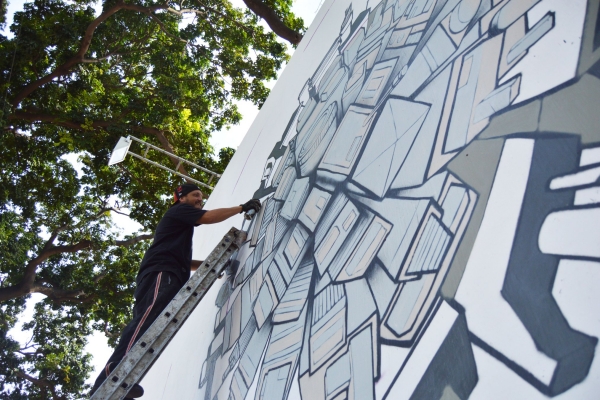
Street artist Iain EWOK Robinson at KZNSA Gallery. Photo by Niamh Walsh-Vorster.
On the Culture Trip website, Angela Shaw, the curator of the gallery, guides us through some of the emerging South African street artists in the city. What is clear from the article is that KZNSA’s ethos is all over the city. The artists reflect the community in their murals, and in turn the community supports public art. KZNSA Gallery dedicates their outdoor wall space to street artists, and new work is created on a regular basis. I am excited to experiment with their “activation” ethos and play around with augmented reality and street art, and work with local artists to make their murals come to life.
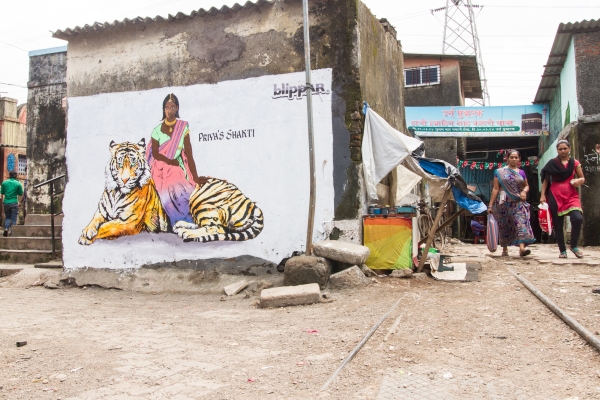
Priya on a Tiger mural in Mumbai. Photo by Tushar Prakash.
When I was creating the comic book series, “Priya’s Shakti” featuring India’s first female superhero who is a rape survivor, I was trying to figure out how to make the work popular and accessible. I discovered the power of public art through the work of Diego Rivera. He created massive murals in public spaces that showed regular people enduring and transforming history. His work was both a powerful artistic and political statement. Using his philosophy, I decided to take the iconic image of “Priya on a Tiger” and put it in public spaces in India. I think those murals have been seen by over 3 million people.
Throughout Durban, there are dozens of murals consciously (or subconsciously) influenced by Diego Rivera. The artists are painting regular people from their community on enormous walls or bridge columns, thus transforming the mundane into something beautiful and sublime.
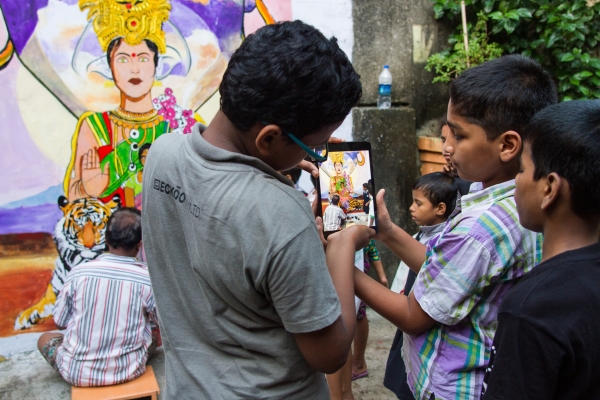
Priya on a Tiger mural in Mumbai. Photo by Tushar Prakash.
Later, I discovered how to activate these murals and make them come to life through augmented reality. This emerging technology has the potential to change how we perceive and engage with the real world through a digital layer. Artists can create a monologue or physical version of their art and then re-imagine it through a digital transparency over the original without altering it. AR is a new toolkit for artists and for groups of artists to collaborate on new ideas. Even though the painting or mural remains consistent -- the digital layer can change instantly and react to the viewer’s perception of it. I am looking forward to exploring Durban’s street art scene with local artists and instill a spirit of adventure and play into the artwork.
[/et_pb_text][/et_pb_column][/et_pb_row][/et_pb_section]
Arriving in Ecuador during the time of corn harvest, I was deeply impressed by the magnificent cornfields. I envision that was what parts of Manaháhtaan (precolonial Manhattan) used to look like. I also was delighted to learn that the companion-planting agricultural practice of the Three Sisters Garden (interplanting squash, corn and beans together to support each other) was also prevalent in Ecuador; another proof of shared knowledge across ancient Americas.
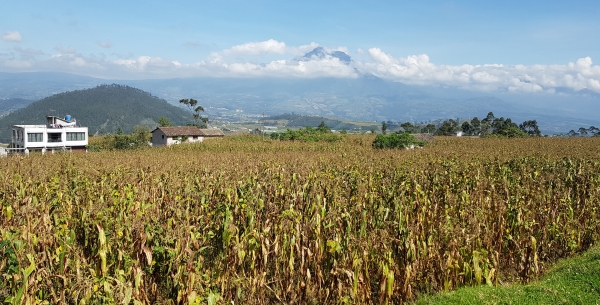
I also ate a lot of corn during the months of March and April. Between boiled, grilled, tostada, mote, and quimbolito, the best was my first humita prepared by Maria Edubijes Mendez de Jesús, aka the beloved Doña Mary. Mary, always beaming with the warmest smile, is an Afro-Ecuadorian grandmother who often works as the chef at Casa de Artes Yarina, my American Arts Incubator host partner organization. While I directed American Arts Incubator — Ecuador, I noticed that the feminine labor of Doña Mary, the woman who took care of our wellbeing, was often invisibilized. Her warmth, similar to that of Mother Earth, is often taken for granted.
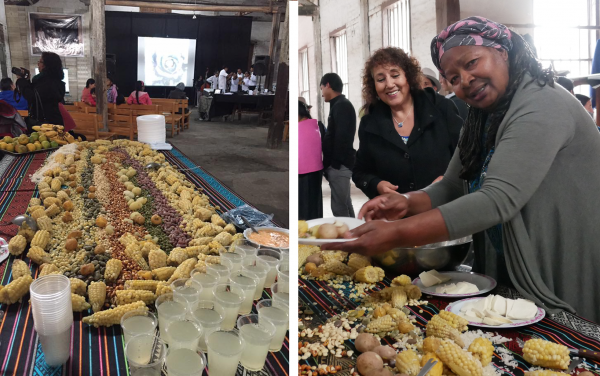
In an interview, Mary expressed: “If I were to be an element of nature, I would be a medicinal plant." As I got to know her, Mary shared that she had endured a traumatic childhood and had singlehandedly raised three children. I also learned that she is a medicinal plant healer, political activist, community organizer, culture bearer of bomba music and dance, and is now becoming an authority of regional gastronomy.
For me, Mary represented not only the strength of pachamama (Mother Earth), but also the core lessons of resilience and survivorship that initially drew me to working within the context of Casa de Artes Yarina and Museo Viviente Otavalango’s past as the Antigua Fábrica San Pedro, a site of indigenous exploitation between the 1850s through 1970s.
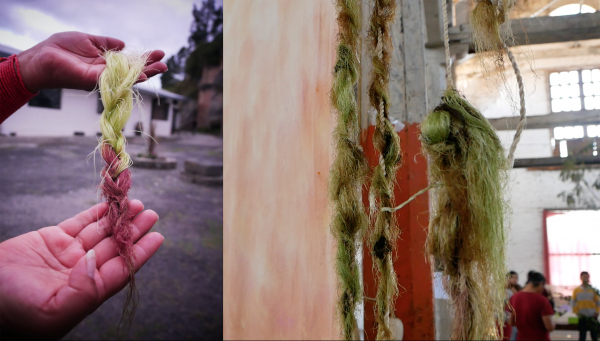
In local marketplaces, I noticed that cornsilk, a potent herb to heal urinary tract and kidney infections, was tossed as trash. Thus, my counterpart Ana Cachimuel and Mary helped me procure cornsilk from market vendors and I braided them to frame a drawing I made of Mary adorned in medicinal plants she uses to heal people. The drawing was then activated with a video interview paired as an augmented reality feature.
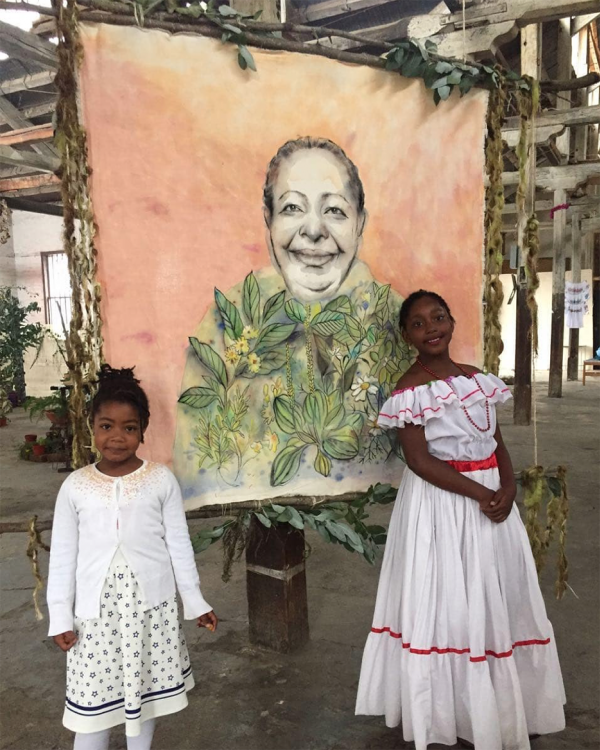
In addition to weaving cornsilk to tell this story of resilience, as part of the 28-day incubator challenge, I introduced how to create augmented reality (AR) based experiences to amplify intergenerational and intercultural dialogues to address social inclusion. As we used digital art to reveal historical patterns of exploitation and intercultural strife, I was weary of replicating unbalanced power dynamics within our incubator. My participants were diverse in age and socio-economic status as well as cultural, professional, and racial backgrounds. We had heated conversations on racial and gender equity. We searched for alternative terms to social inclusion and questioned concepts such as, "who has the power to include/exclude?"
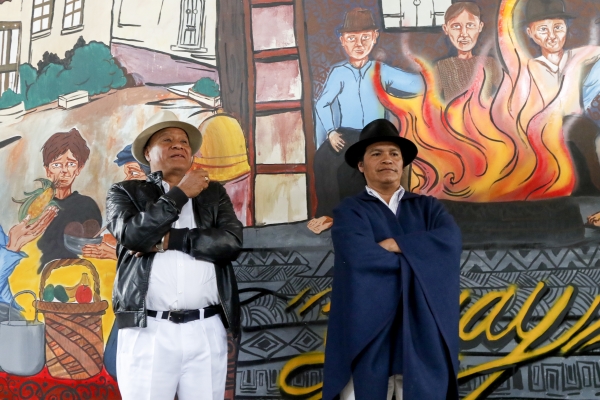
This process led to the formation of three community projects that each received small seed-grants to build project prototypes: Yuyay applies augmented reality to site-specific community murals, Mama Cuchara is an AR Spanish and Kichwa language book on medicinal plants, and Warmi Tukushka stages immersive theater with rural communities for a social tourism project in order to generate income for Indigenous communities.
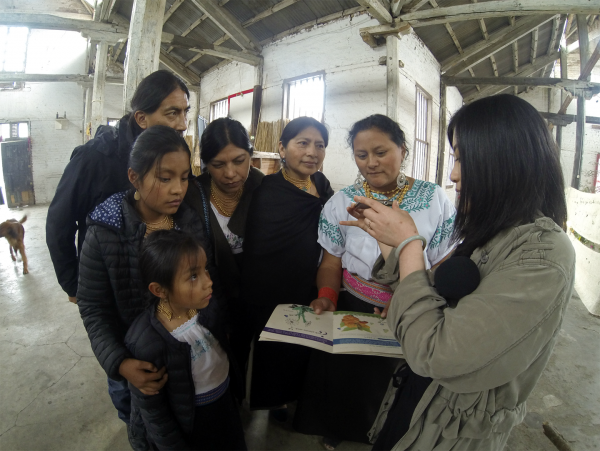
There were limits on how much I, as an artist, facilitator, admin, PR and community manager, teacher, exhibition designer, and translator could contribute to a community. Despite running the program with minimal infrastructural support — internet was often nonexistent, rain seeped into our tech workshop spaces, and I nearly fainted due to sleep deprivation compounded by altitude sickness — what we had was strong community spirit and ingenious resourcefulness thanks to Ana Cachimuel, her family, as well as the participants. I also acknowledge the behind-the-scenes support of Maya Holm and Shamsher Virk of ZERO1. Each team put forth hardwork and met my tough love with grace.
As folks looked to me for leadership, I often thought of my cohort of AAI "artstronauts" who are all exploring how to adapt the art and tech incubator to a demanding foreign context. There is no formula as each incubator is different, and that is the beauty of the AAI program. I admit that I had moments of disillusionment as I became acquainted with local community politics. Randi randi (the kichwa expression for reciprocity, literally meaning give and take) was constantly preached to me as a core cultural value, yet it was not always practiced and at certain moments I was hollowed witnessing crude self-interest and nontransparent resource distribution. Yet, witnessing Mary's resilience, I knew that I had to exert myself and call out problematic circumstances. #CulturalDiplomacy.
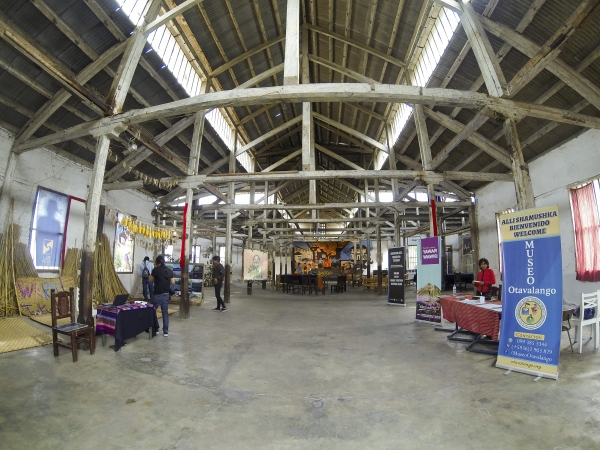
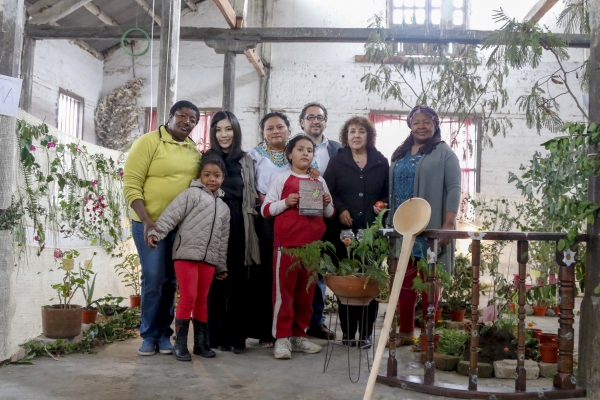
The day of the panel review was truly a highlight! The community projects were beautifully installed into a cohesive exhibition in Casa Cruz of Museo Viviente Otavalango. Each group passionately delivered their pitches to the judges and the public consisted of many community members, elders, students, and even the executive director of the Fábrica Imbabura, Edgar Flores.
Rich exchanges and insightful critiques took place during the public presentations, and each community project received additional support in the forms of mentorship, invitations to local incubators, and possible funding opportunities. Several participants traveled to Arte Actual Flasco, a social science and humanities cultural center in Quito, to share our process with a wider audience and connect rural and urban dialogues. I was full of admiration for each team sharing their aspirations.
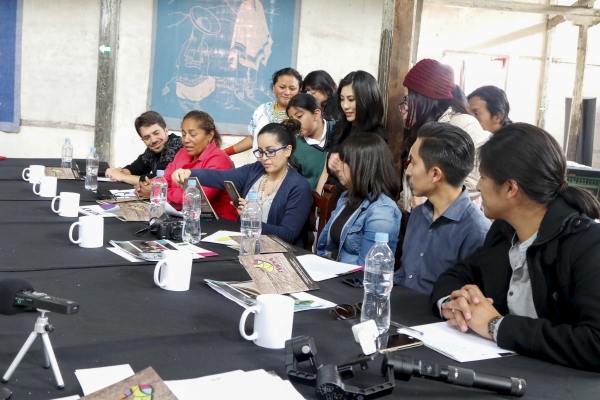
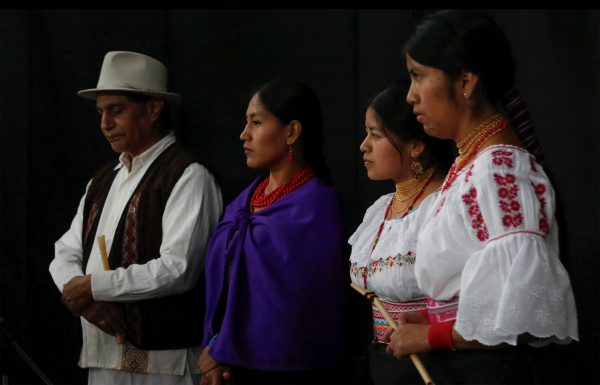
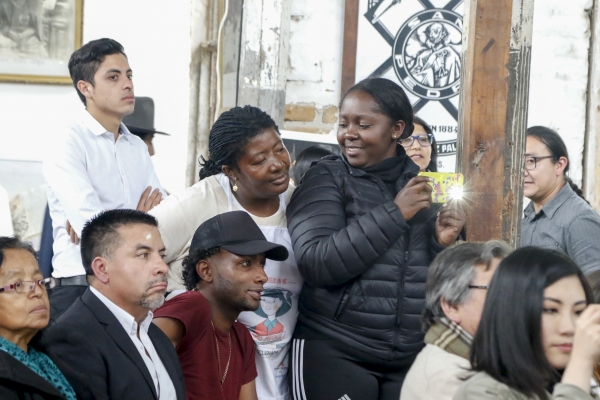
I’ve been back in the U.S. for less than a week and am trying to prolong that enigmatic transition period between settling back into my New York City routine, digesting the lessons from my intensive incubator challenge, and brainstorming next steps for my incubator participants to really thrive for the long term.
I leave inspired that many people in rural Ecuador, despite living in poverty, are still on their ancestral land and can live off the produce yielded from their home gardens. Their food sovereignty gives me hope that a regenerative and cooperative economy is viable. I believe that my incubator participants still have the possibility to carve out a new economy centered on sustainable land-based practices with healthy communities who will continue to cultivate the resistant ancestral technology called corn, generation after generation.
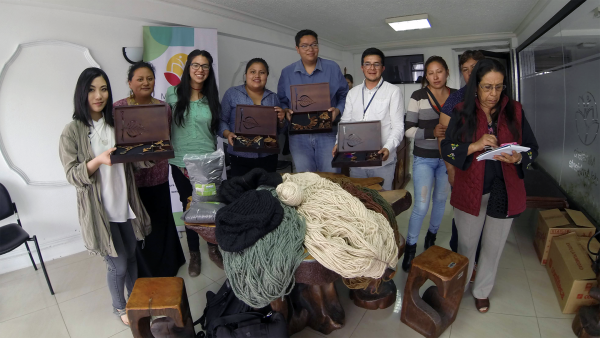
The fierce equatorial rays, crackling fire, rising smoke, floating ashes, cultural protocols with community elders, taytas and mamakuna — these are the constant elements that have accompanied American Arts Incubator — Ecuador since we began in mid-March. We kicked off with an artist talk, “ACTivaciones: Art, Community and Technology,” at Quito's Arte Actual Flacso, which was followed by an early morning drive to the exchange city, Otavalo, to work with Casa de Artes Yarina housed in Museo Viviente Otavalango.
The following day I experienced my first press conference that would not start until the scent of palo santo pervaded the art center. The occasion was honored by a beautiful arrangement of wild flowers collected from the surrounding fields on a totora mat to celebrate friendship and diversity. Community life is very vibrant here. I was quickly integrated into communal lunches and invited into people’s homes. My host partner’s contemporary Kichwa music group, Yarina, is a band made up of eleven brothers and sisters that perform together with a three decade trajectory. Community is a permanent fiber in local culture.
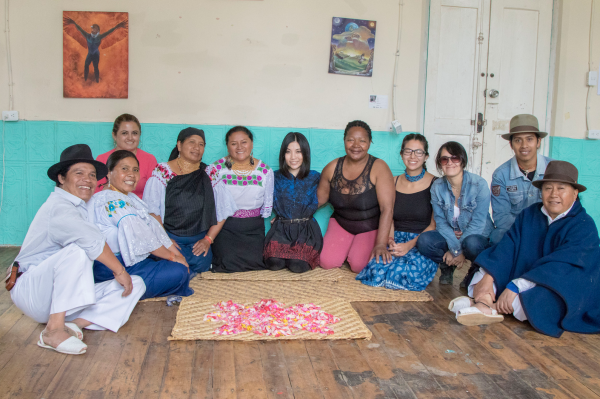
My incubator participants vary in age, education level, class and heritage backgrounds, as several come from different native communities in the Imbabura province while many others identify as mestizo. Trying to find a way to address social inclusion through art and technology within a new cultural context and such a diverse group has required me to further explore cultural protocols, race relations and cultural specificities.
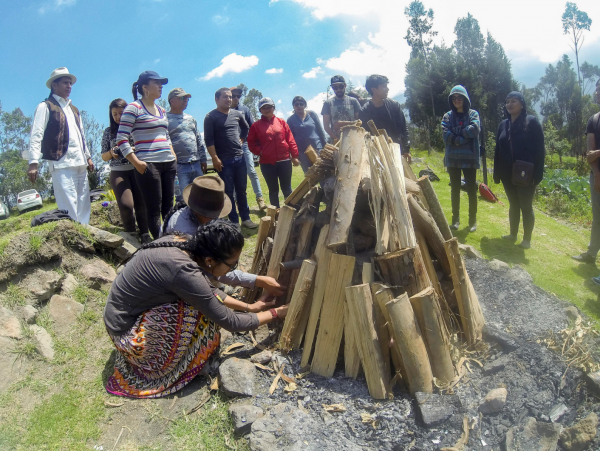
Our first day of workshops focused on exploring power dynamics and shared values within our group, getting to know the historical context of Museo Viviente Otavalango’s previous life as a factory that exploited Indigenous laborers and developing intro-level AR experiences. We also had a hands-on learning experience at Pakarinka Culture Center to learn about ancestral customs with Kichwa culture bearers. This day included healing with the sacred “cuy” (guinea pig) and medicinal plants, meeting traditional healers and midwives, and creating a pachamanka meal together as we discussed connecting to cultural roots and indigenous revitalization.
To contrast the learning experience in a rural setting, we also toured Ciudad Yachay’s (Ciudad de Conocimiento) state-of-the-art facilities including a supercomputer, fablab, technology and entrepreneurship initiatives.
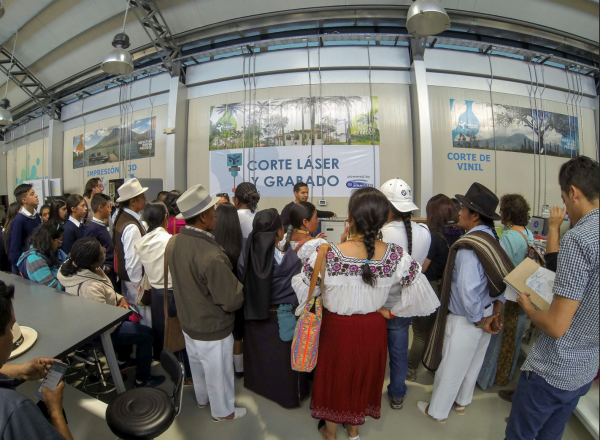
All of these experiences helped us develop community projects that address social inclusion using cultural and educational methodologies. As I write, they are in full production mode as we gear up to install prototypes this week and pitch the projects to potential supporters. One of the projects, Yuyay, is an effort to create site-specific AR-activated murals in Museo Viviente Otavalango.
The project engages deeply with what it means to be an “Art, Community and Technology” incubator in a small Andean city in Ecuador. When we think of the word technology, we often think of 20th century innovations. Yet, as I mentioned in my previous blog post, this incubator accounts for ancestral technology. Otavalango’s previous life until the eighties was the Fábrica San Pedro that employed native workers under harsh conditions to produce woven textiles. This was the first factory in Ecuador and produced woven goods made from "telar callua," a pre-Incan form of backstrap weaving.
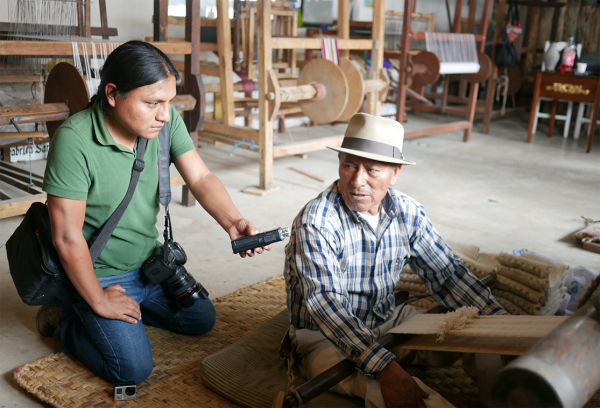
By the mid-19th century, the factory imported mechanical weaving looms from Boston to maximize production. Fast forward to 2018, and we are engaging digital media in an arts incubator to retrace the social history of the site through the impacts of the industrial revolution and the persistent threads of ancestral technology.
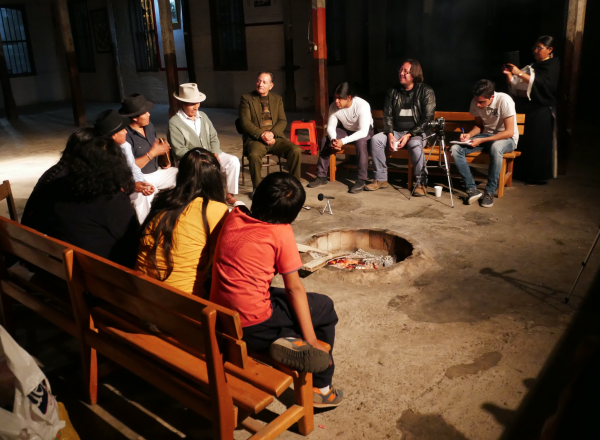
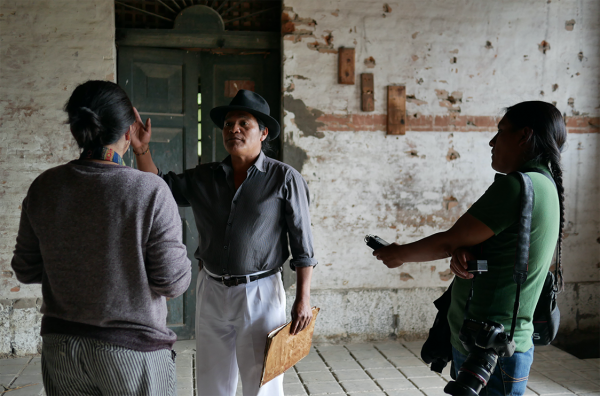
While I teach augmented reality workshops, I am also taking weaving classes in the old factory and getting an inkling of how contemporary machinery evolved from this ancient practice. Weaving is coding in binary motions, performing mathematical calculations, enacting geometry and executing precision. It is also about transmitting oral history, ancestral knowledge and following the movements of those who came before us in the social fabric.
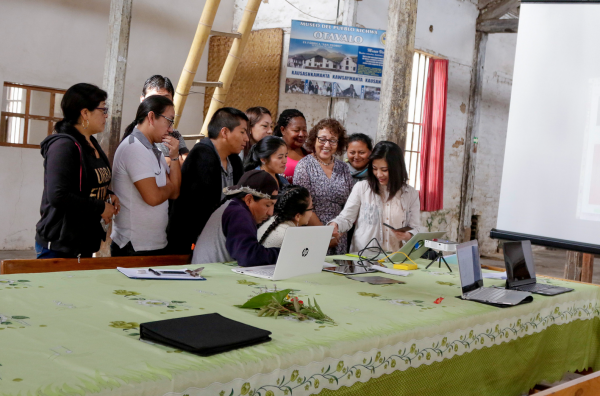
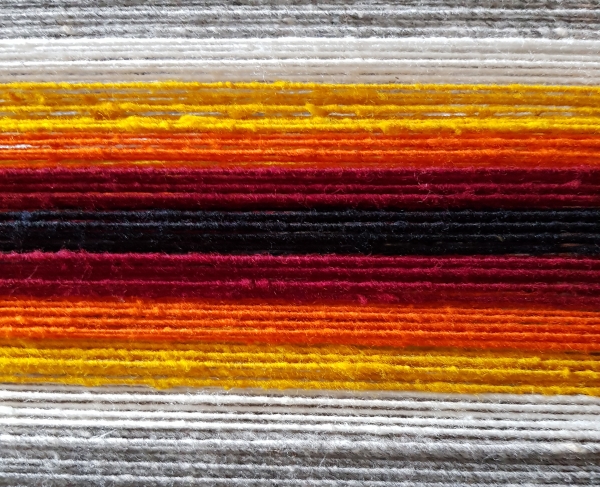
As a daughter of immigrants in Turtle Island (aka North America), I strive to be in allyship to the original peoples and the land and waters that nourish me by activating multisensory storytelling and interdisciplinary art, including sculptural installations, performances, lectures, community engagement, writing, olfactory art and experiential technology collaborations with Native culture bearers, creative technologists and scholars. This trajectory shapes my approach to the American Arts Incubator (AAI) exchange where I will be supporting social inclusion of Indigenous and Afro-Ecuadorian populations in Otavalo, Ecuador through sharing how new media storytelling may shift dominant narratives.
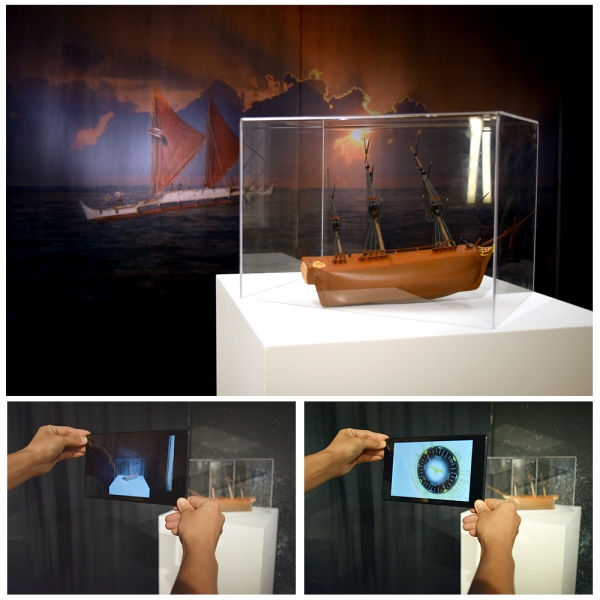
I will be working with Centro Intercultural Comunitario Yawar Wawki Casa de Artes that is housed in Museo Viviente Otavalango, which previously was a textile factory that exploited Indigenous labor for two centuries until it was taken over by workers in 2011. Within this context, Casa de Artes counteracts marginalization and historization of Indigeneity through revitalizing Kichwa language, music and weaving. I am humbled to work with resilient people that embody self-determination. With my workshop participants, I hope to develop site-specific extended reality content to support spreading the story of self-empowerment. Our process will be a co-inquiry on how new media can amplify voices critical to futurity and challenge the notion that indigeneity and modernity are incompatible.
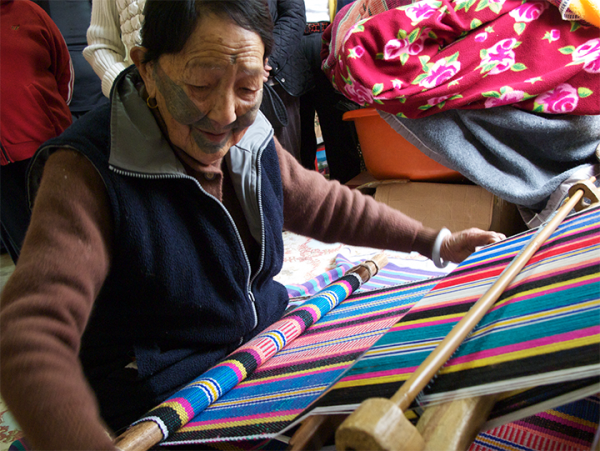
I want to take this opportunity to broaden general conceptions of technology to include ancestral technologies such as weaving, agriculture, plant medicine and wayfinding. I credit my AAI mentor Cristóbal Martínez (read his writing on Tecno-Sovereignty: An Indigenous Theory and Praxis of Media Articulated Through Art, Technology, and Learning) who pointed out that weaving was the first computer and that we must always question the ideologies embedded within the technologies we use, and how they may occlude other forms of literacy and perpetuate power structures. This resonates in an age where we rush to embrace new technological trends without contemplating how often they are derived from military initiatives that were once instrumentalized against certain marginalized communities. Navigating these power dynamics will be one of the first challenges I will face as the Incubator’s lead artist and I hope to find a balance between emerging and traditional media throughout our workshop.
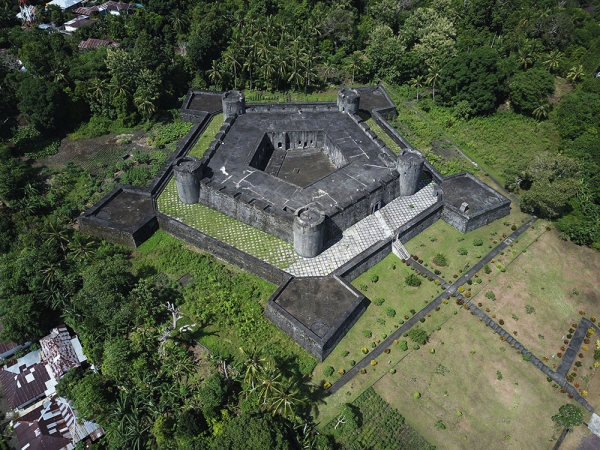
Drone VS. Fort, Rhunhattan Project, April 2017. Image by Beatrice Glow and Highway101, etc. Exploring the embedded ideologies of technology, we used a drone to photograph Fort Belgica that was built by the Dutch East India Company on the original Spice Islands of Indonesia. By using 20th century military-derived technology (drone) to document 17th century military technology (fort), I reinterpret and subvert the ideology belying the drone and use it to support decolonizing perspectives.
Gearing up for the exchange, I have been rereading Decolonizing Methodologies: Research and Indigenous Peoples by Linda Tuhiwai Smith. I am also learning about Andean culture and cosmovision through learning the Kichwa language. For example, the word for “person” is runa, and the full definition is “a being of nature that acts with force and wisdom.” My teacher gave me a Kichwa name that realigned me on the path of runificación, which urges me to act in my full potential while being conscious of my relationship to the ecosystem and the cosmos.
During my stay, I hope to learn more about how Indigenous communities in Ecuador have been at the forefront of environmental stewardship, most recently evidenced by the Yasuni resistance against the pipeline construction in the Amazon Rainforest as well as the 2008 constitutional enshrinement of the values of sumak kawsay (buen vivir)[1], whose vision for environmental health is critical to a sustainable and socially-just future. I am curious to learn how this is implemented on a day-to-day level, the challenges, and how these takeaways may guide and strengthen parallel North American efforts. My time in Otavalo will undoubtedly expand my understanding about the ramifications of colonialism, environmental racism and Indigenous revitalization.
In doing research ahead of my trip to PNG, I have been reading many articles around the treatment of women in PNG. The results are overwhelming with rape and domestic violence being commonplace. One report in particular, compiled by the Lowy Institute – an independent, non-partisan international policy think tank – stands out and sums up the situation very well. The analysis is presented by author Jo Chandler in an article titled Violence Against Women in PNG: How Men are Getting Away with Murder which is a comprehensive study showing that “violence against women is a significant obstacle to PNG’s development and prosperity and that there are economic, social, and cultural drivers of violence and women face immense hurdles in obtaining justice.” This can only be categorized as an epidemic of violence where approximately six out of ten women experience some type of physical abuse with much of that violence occurring within families. But it doesn’t stop there. Other forms of violence are tribal, cultural, and institutionally related and in some areas women are tortured and burned under suspicion of practicing witchcraft.
The PNG government has made some efforts to curb domestic violence against women by unanimously passing the Family Protection Act in 2013. To give a quick summary, this bill:
Despite the new law, however, violence against women has increased. The concern is that there is so much complacency around violence against women that perpetrators may not face consequences at all for violent or sexual offenses.
More practical efforts to tackling the violence continue to be prioritized. The PNG government is joining forces with Australia's Foreign Ministry and the UN Development Program in a new workshop initiative. Additionally, the US Embassy in Port Moresby has created the PNG Women’s Forum, a three day conference, now in it’s second year, which opens the dialogue on women’s issues. This year’s Women’s Forum is focused on advancing gender justice and economic opportunity for women.
Most importantly, there are women who, despite all the hardship, find the courage and bravado to go against the status quo risking life and limb (literally) in the process. There is Helen, who is a mother of eight who was randomly attacked by a man who bit off her bottom lip. Her attacker was taken to the police but was released shortly thereafter due to “lack of evidence.” Documentary photographer Vlad Sokhin worked with Helen to chronicle Helen’s Story as well as the story of other women in an effort to fight for women’s rights.
Another inspiration includes Sophie Mangai, a grandmother in her 60s and president of the East Sepik Council of Women. Sophie led a protest through downtown Wewak, a town on the northern coast of PNG, on the eve of International Human Rights Day. Her protest went to the local police station to report the rape of an 18 year-old village girl but instead was met by the very policeman who led the rapists on a raid of the village. He responded with violence against her, but Sophie held her ground. She was jailed for her efforts. The story trended on social media and became the focus of an international campaign that eventually freed Sophie and forced the senior police and politicians to take action.
I hope to meet and work with women like this during my stay in PNG. Perhaps through collaboration we can discover new ways to empower individuals to take action and make a difference in their lives and those immediately around them. Then there are the men and boys. What do they think of all this? Are there any male advocates for the women?